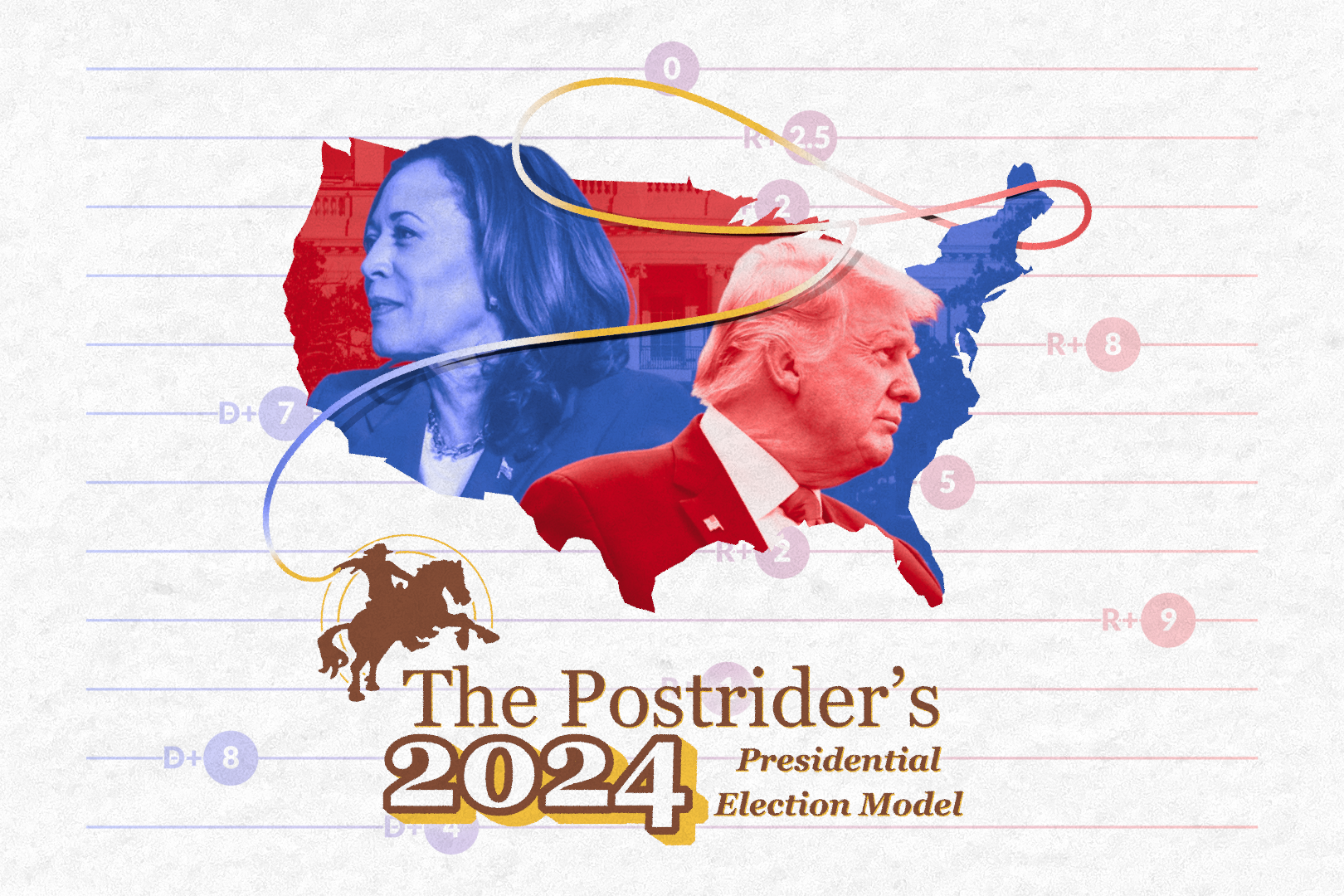
2024 Presidential Election Model
“Dread it, run from it, destiny arrives all the same, and now it’s here.” The 2024 presidential election is
For 2024, we really dug in. Beyond our traditional ratings and analysis, we added a ton of features so you can visualize what factored into our conclusions, see factors interact across the map, and even use our tool to make your own assumptions. Happy electioneering!
Editor’s Note: the 2024 election is over, what is displayed here is the last version of the model before Election Day, 2024. Overall, our model performed quite well, missing only one state each in the presidential and Senate elections. You can read our retrospective assessment of our model that begins to look into how we can further improve here. To see how the model would’ve run the election with an R+1.8 generic ballot (the actual result), click here.
How to Use | Methodology | Senate Ratings
Find a problem? Enjoy the tool? Just want to share how you feel? Let us know!